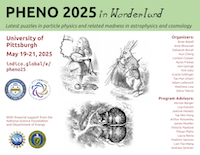Speaker
Description
Cosmological first order phase transitions proceed via the random nucleation and expansion of bubbles throughout space. This inherently stochastic process leads to statistical fluctuations across causally disconnected patches from which super-horizon curvature perturbations emerge. I will discuss how such phase transitions generate scalar perturbations that follow a universal power-law scaling in the phase transition parameters. By numerically modelling the resulting curvature perturbation, we can set constraints on the phase transition parameters in light of cosmological data such as CMB, Lyman-alpha, and the observation of dynamical heating in ultra-faint dwarf galaxies. This gives us a handle on constraining cosmological phase transitions even if they occur in a dark sector that interacts with us only gravitationally.

